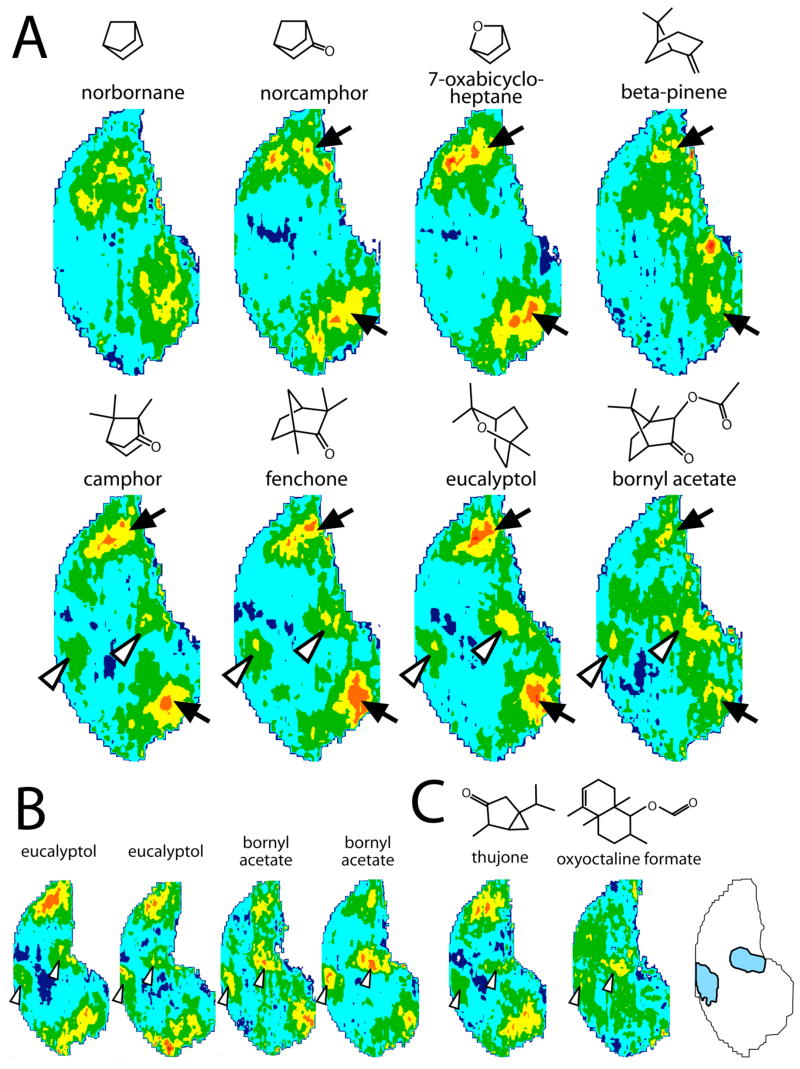Fig. 3.
Anatomically standardized contour charts showing relative 2-DG uptake across the glomerular layer in animals exposed to bicyclic odorants. Orientation and color scale are the same as for Figure 1. Charts represent z-score standardized data matrices averaged across different rats exposed to the same odorant condition. A: Patterns from a single experiment involving exposures to a series of related bicyclic odorants first suspended in mineral oil. Most of the odorants activated similarly positioned clusters of glomeruli in the dorsolateral and dorsomedial quadrants of the posterior part of the glomerular layer (solid arrows). The latter four odorants in the series also activated a pair of novel glomerular clusters situated at the ventral extremity of the bulb (open arrowheads). B: Patterns resulting from independent exposures involving eucalyptol and bornyl acetate odorants volatilized from neat liquid. Similar patterns were obtained for the independent exposures, although the ventral uptake (open arrowheads) evoked by bornyl acetate appeared to be more robust when the neat liquid was used as the odorant source. C: Patterns resulting from exposures to two bicyclic odorants that did not contain bridging atoms. These odorants also showed evidence of activating the pair of ventrally positioned glomerular clusters (open arrowheads). The schematic at bottom right indicates the location of the novel paired ventral activity foci.

